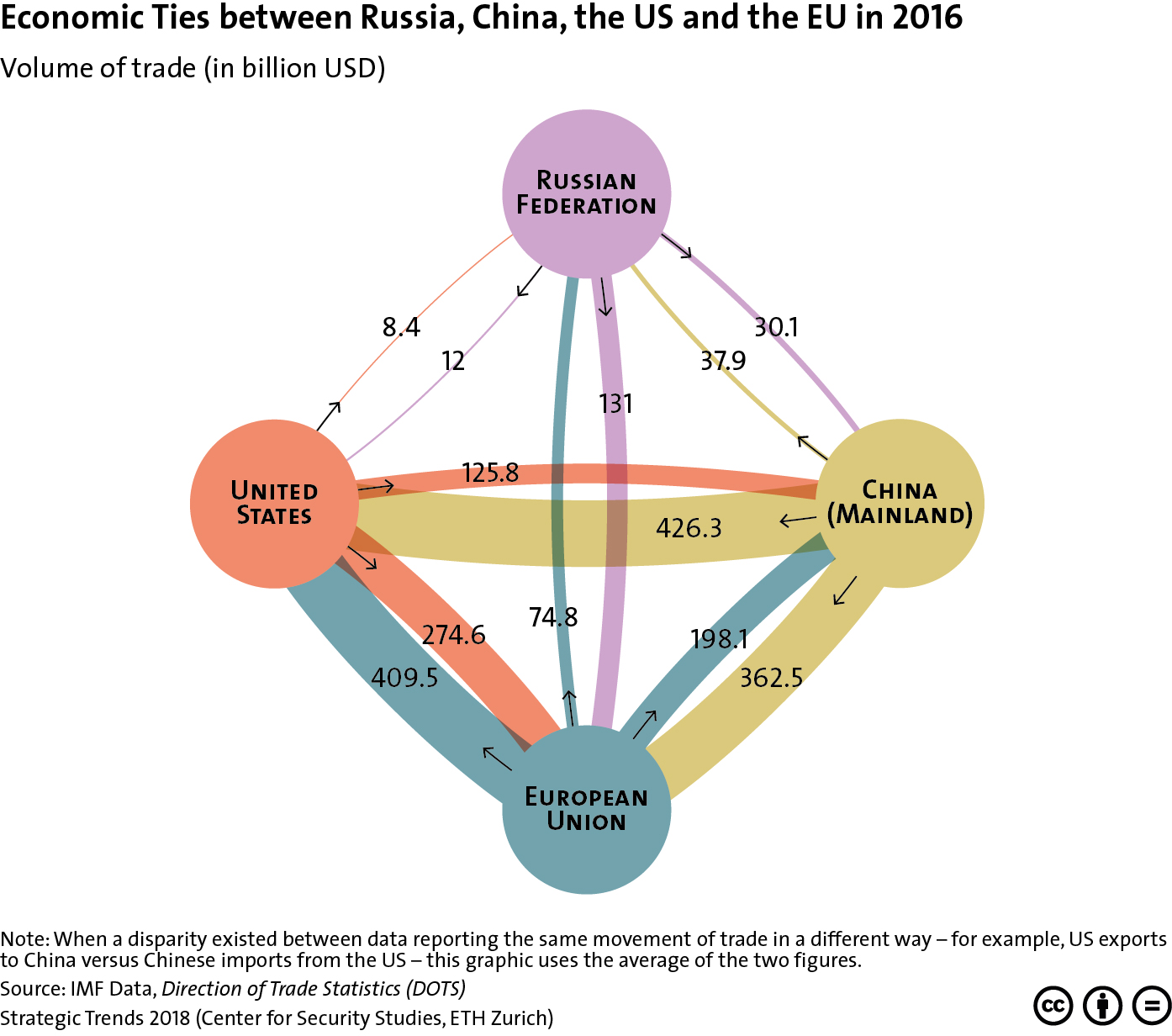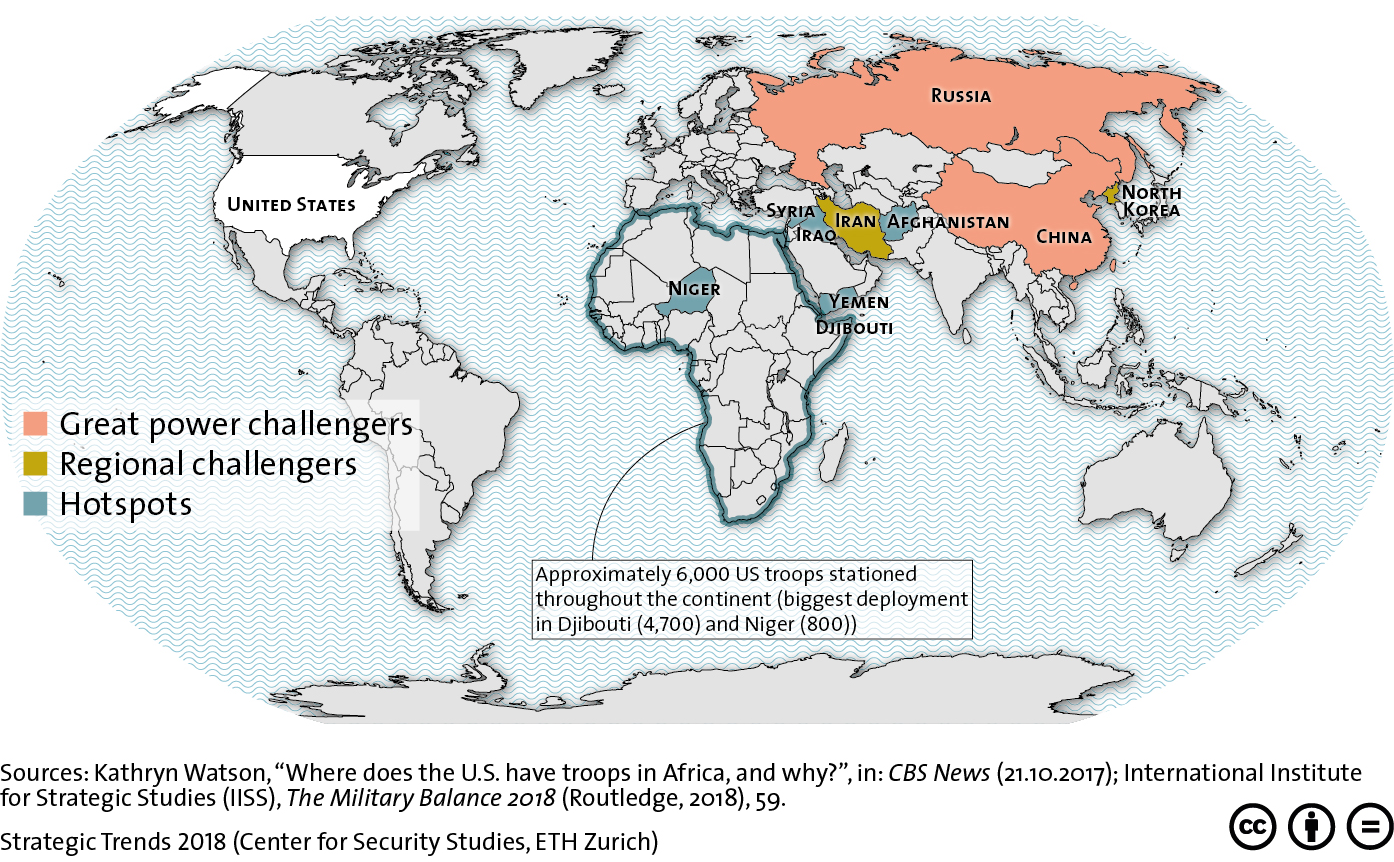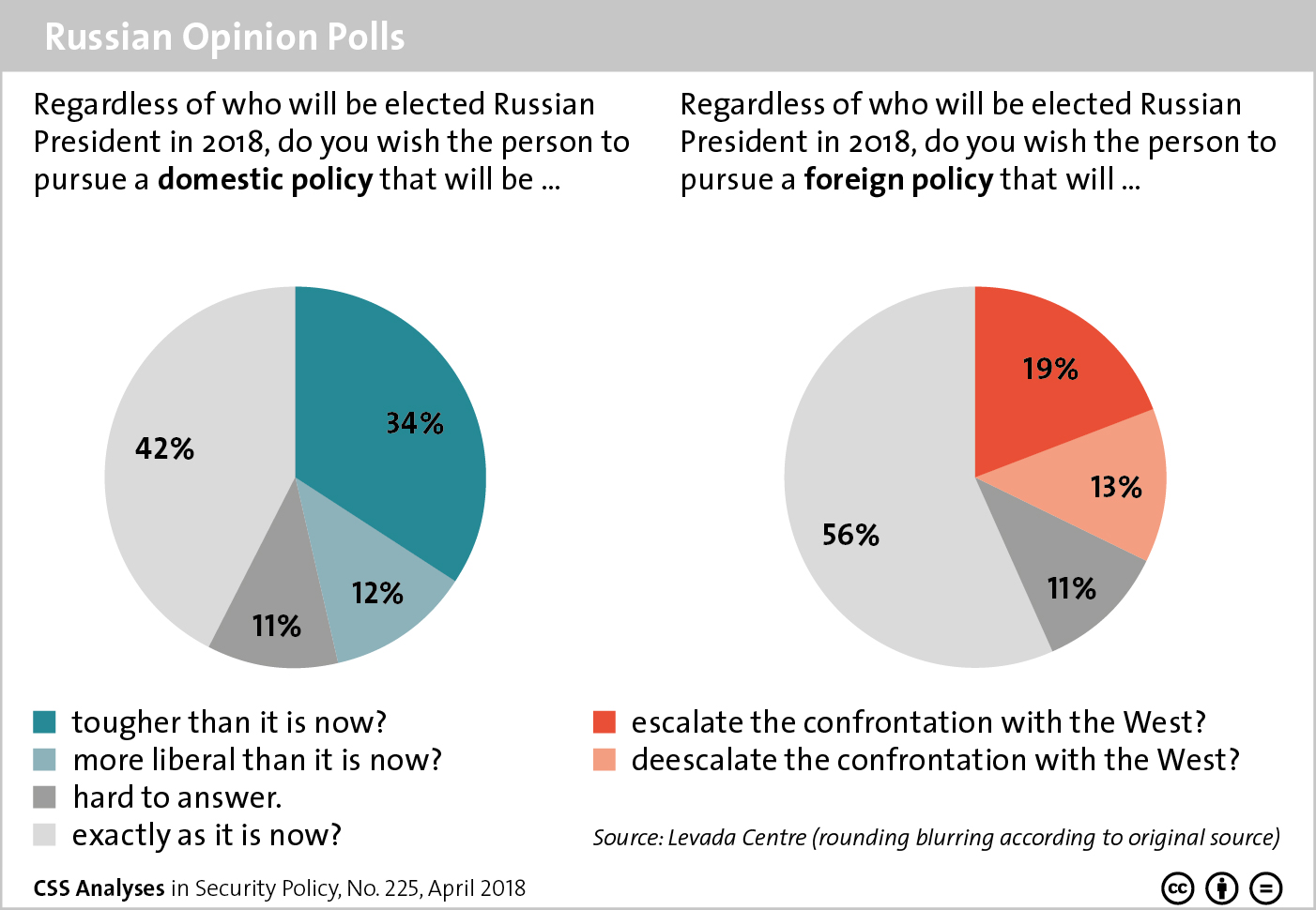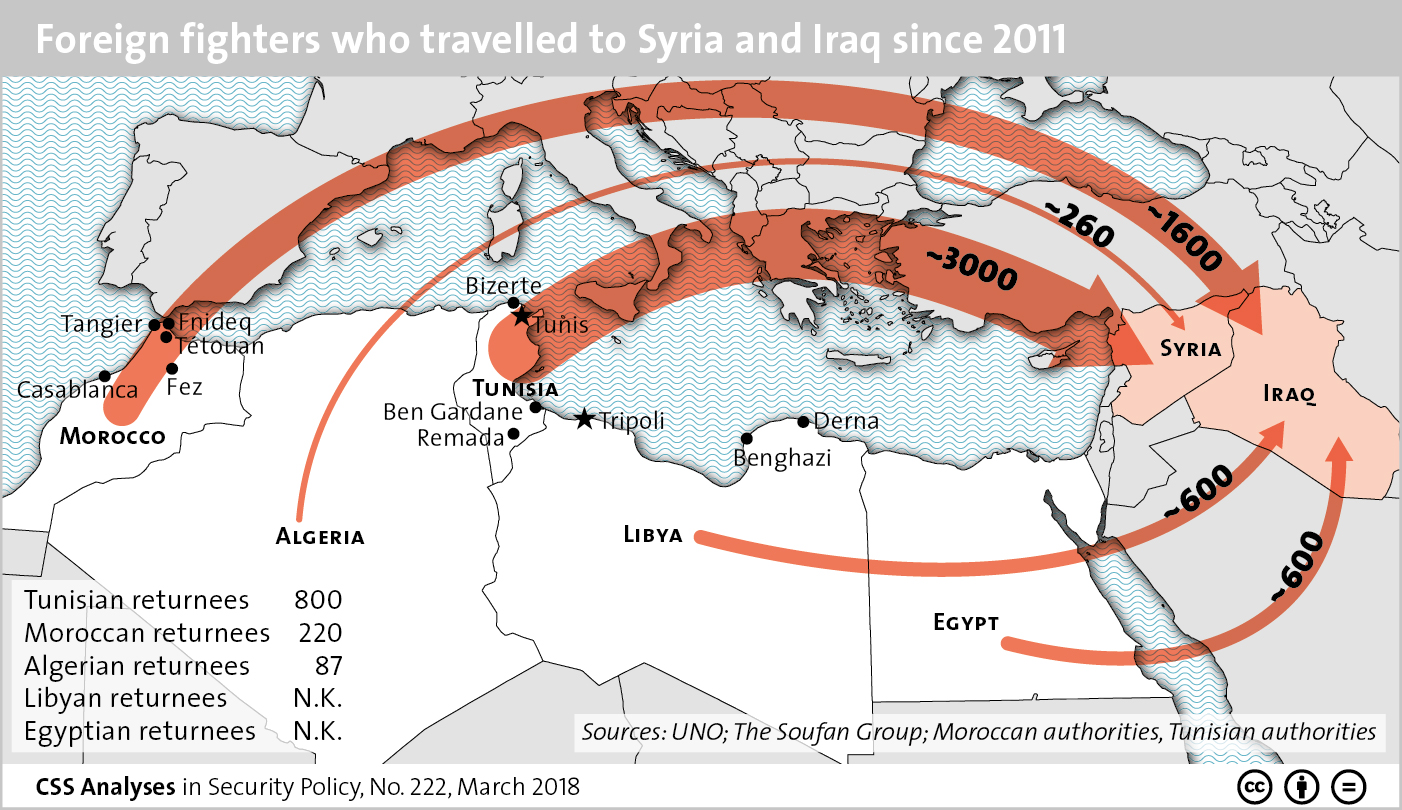
This graphic plots the volume of trade between Russia, China, the US and the EU in 2016. For more on the China-Russia relationship, see Brian Carlson’s chapter for Strategic Trends 2018 here. For more CSS charts, maps and graphics on economics, click here.







